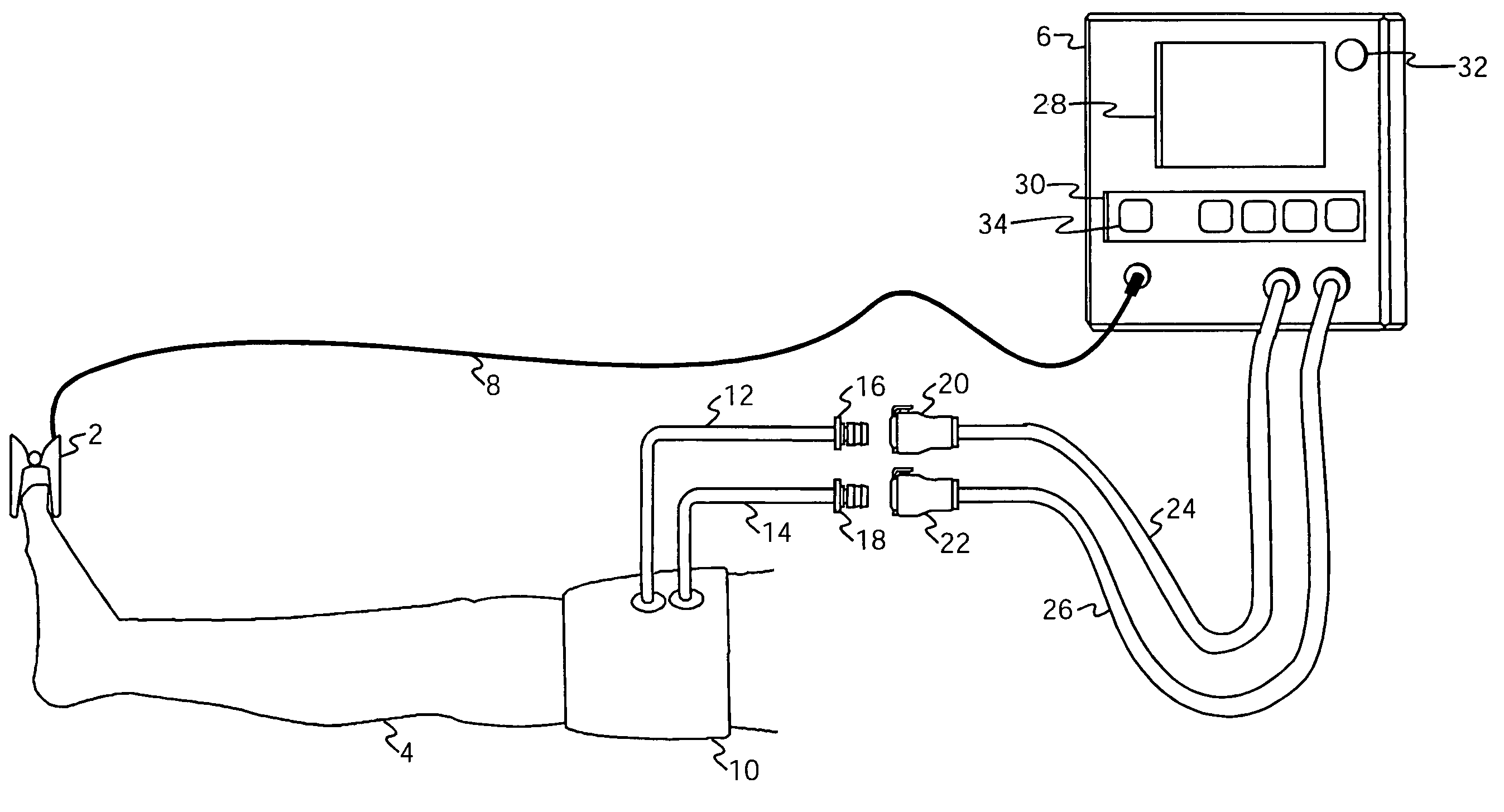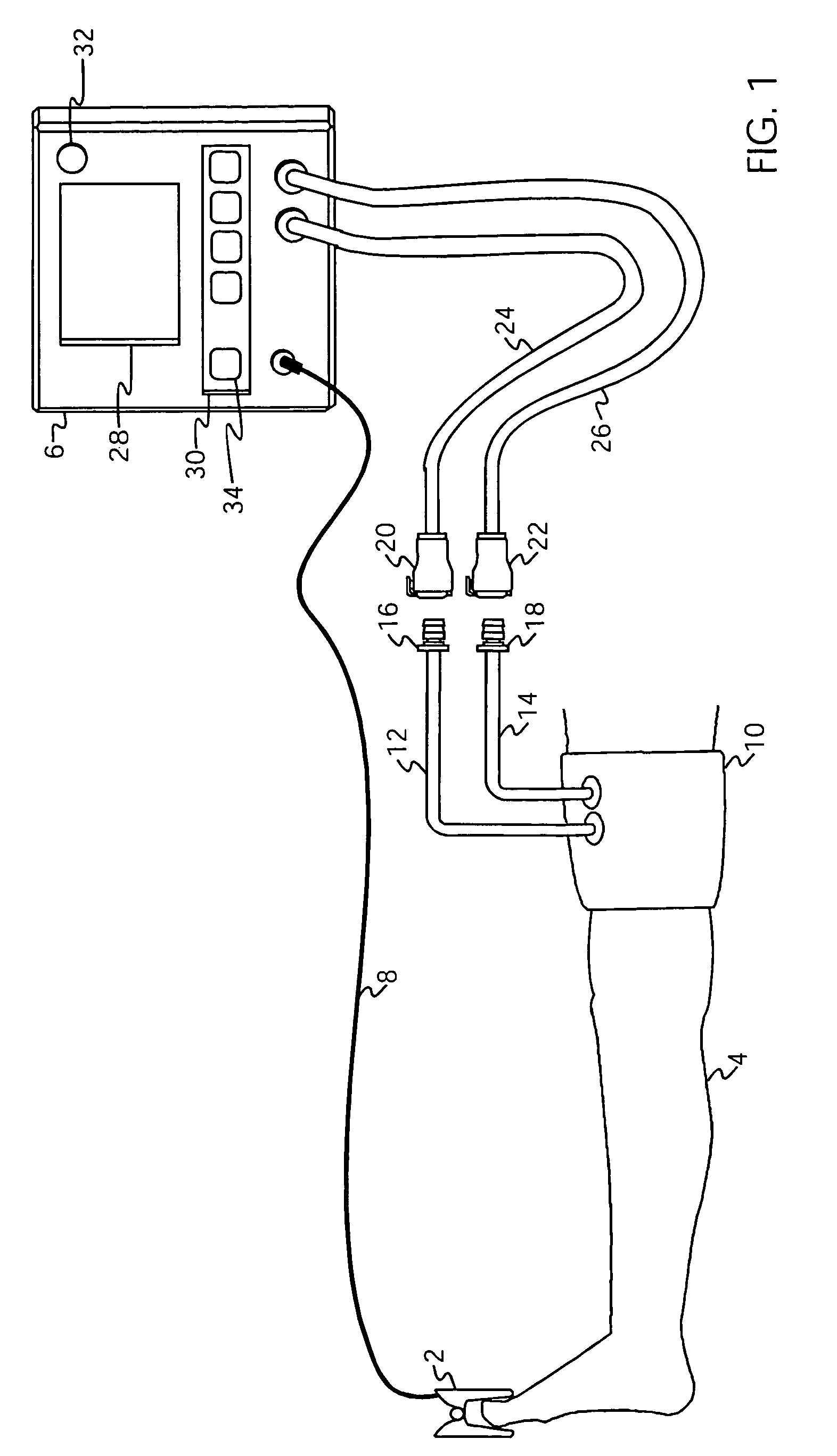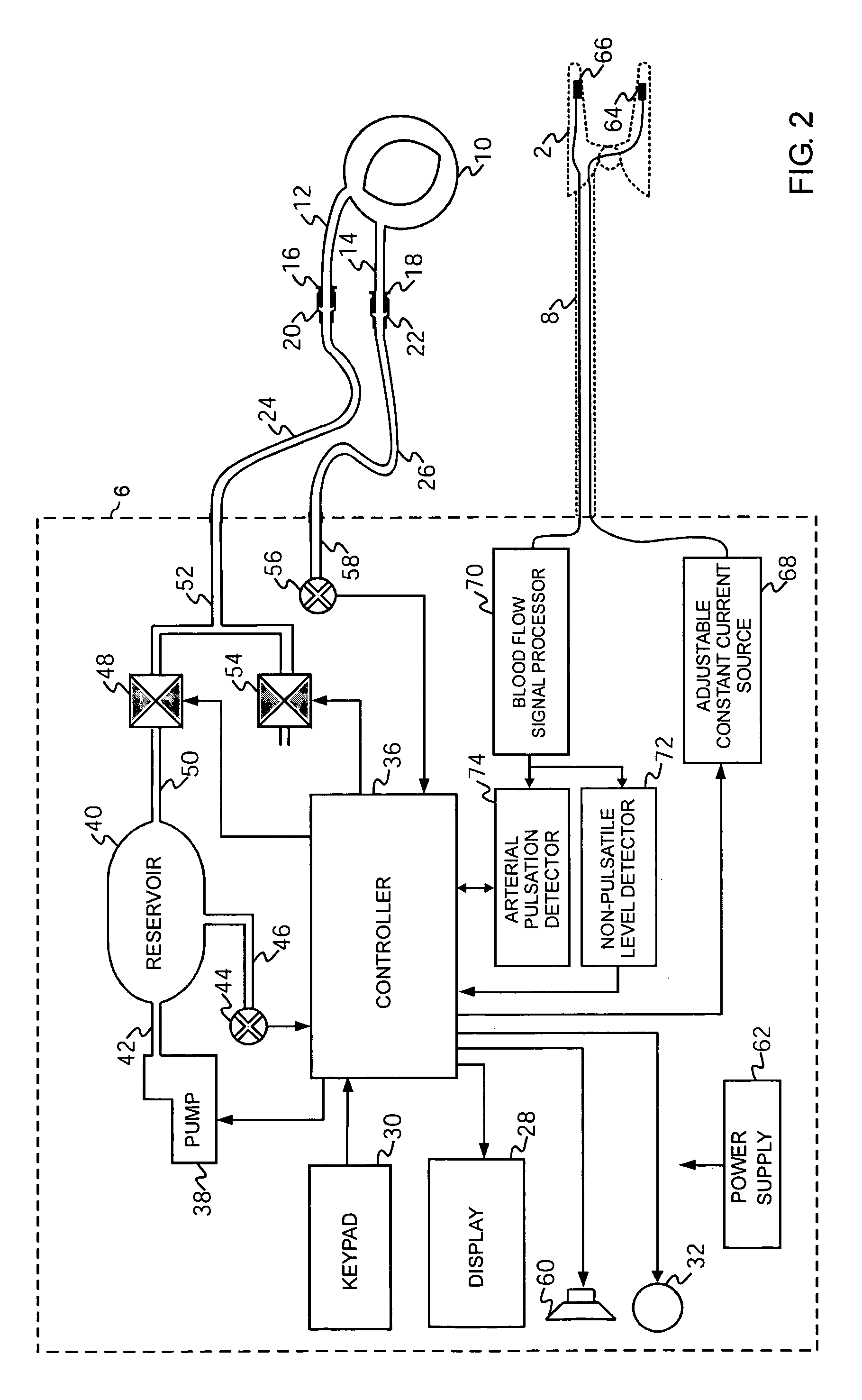Surgical tourniquet apparatus for measuring limb occlusion pressure
a technology of tourniquets and limbs, applied in the field of pneumatic tourniquet systems, can solve the problems of affecting the accuracy of the sensed cuff pressure, the accuracy of pressure regulation, and the risk of tourniquet-related injuries to the patient, and the limitations of performan
- Summary
- Abstract
- Description
- Claims
- Application Information
AI Technical Summary
Benefits of technology
Problems solved by technology
Method used
Image
Examples
Embodiment Construction
[0018]The embodiment illustrated is not intended to be exhaustive or limit the invention to the precise form disclosed. It is chosen and described in order to explain the principles of the invention and its application and practical use, and thereby enable others skilled in the art to utilize the invention.
Hardware
[0019]FIG. 1 shows blood flow transducer 2 applied to a digit of patient limb 4 and connected to instrument 6 via multi-conductor shielded cable 8. Blood flow transducer 2 is positioned on patient limb 4 at a location that is distal to pressurizing cuff 10 which is also shown applied to patient limb 4. This configuration permits blood flow transducer 2 to detect blood flow in patient limb 4 and changes in blood flow that occur in patient limb 4 as a result of the pressurization of cuff 10. Blood flow transducer 2 is used by instrument 6 when instrument 6 is performing automatic measurements of limb occlusion pressure (LOP). LOP has been defined above to be the minimum pres...
PUM
 Login to View More
Login to View More Abstract
Description
Claims
Application Information
 Login to View More
Login to View More - R&D
- Intellectual Property
- Life Sciences
- Materials
- Tech Scout
- Unparalleled Data Quality
- Higher Quality Content
- 60% Fewer Hallucinations
Browse by: Latest US Patents, China's latest patents, Technical Efficacy Thesaurus, Application Domain, Technology Topic, Popular Technical Reports.
© 2025 PatSnap. All rights reserved.Legal|Privacy policy|Modern Slavery Act Transparency Statement|Sitemap|About US| Contact US: help@patsnap.com



